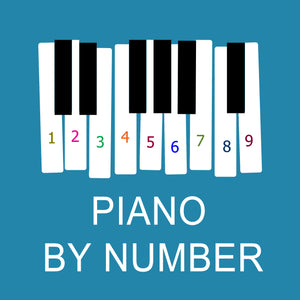Piano Methods and Children's Personalities

Piano methods and children's personalities must match almost perfectly. Otherwise the job will become stressful for both teacher and student. The younger the child, the more this is true. If your prospective piano student takes to reading sheet music like a duck to water, then you might be able to get away with the standard book based piano methods.
But most kids like reading music about as much as a trip to the dentist, and that's the truth. There are ways around this attitude, but none of the solutions are quick and all involve extreme patience and effort on the teacher's part.
Piano Is Easy
Make The Beginning Palatable
To impose a piano method that the child finds uncomfortable is a recipe for disaster. We're not talking about endlessly coddling kids. We're talking about finding ways to make the start of piano lessons enjoyable enough for the child to want to continue.
Regardless of a child's personality, if they are having trouble reading music, you had better find other ways to keep them interested.
Making Music Like Finger Painting
The most prevalent trait of children at the piano is the impatient desire for instant mastery of a specific song. It may be a song they know, or one you show them. Simply put, children want to make music at the piano, however sloppy. When you finger paint, you expect a mess.
Think initially more of play than work. Thus if you can get a child to play even a few notes of a song they like, you have a chance of launching them happily. Take Jingle Bells as an example of a song. (Obviously, if you are teaching a 10 year old, you'll have to think of more stimulating material.)
Try A Song With Numbers
Start With The Simplest Possible Fingering
You simplified the material until the child grasped the essential fact: this is music and I can play it on the piano. The simple act of making music, however humble, is not lost on children.
Feed The Fire
They will want more songs, right away. Kids will respond if you are careful to simplify the material so it is within their grasp immediately. Repeat the above experience with dozens of songs, and you will have a child who trusts you. The child likes making music at the piano, and is eager to learn more.
But the music must be couched in terms they can easily understand. With such a student, you can make a slow, easy transition to reading music without risk of losing their initial enthusiasm.
If They Don't Resist, Read Music
If a child demonstrates a desire to read music, apply the same rules to that discipline. Simplify as much as possible. Without initial enthusiasm, you have no fuel with which to travel through the intricacies of beginning piano.
Your first job as a piano teacher is to awaken enthusiasm, not begin the indoctrination of the child with your piano method.
REFERENCES
Piano Teaching Style
If It’s Fun For The Teacher, It’s Fun For The Kids
The Backwards Piano Method
Reverse Psychology and Children’s Piano
Help Your Child Enjoy The Piano
Ten Rules for A Pleasant Piano Teaching Atmosphere
If You’re Having Fun, You’re Not Learning
The Difference Between the Worst and Best Piano Teacher
A Piano Teacher’s Emotions
A Pleasant Piano Lesson Atmosphere
The Use of Humor in Piano Lessons
Make Use of Your Student’s Sense of Humor
The Piano Whisperer
Fitting the Piano Method to the Child
Soft Piano vs. Hard Piano
Why I Teach Piano
Advice To A Young Piano Teacher
Teaching Children's Piano
Guilt Is The Wrong Way To Buy Attention
The Piano Teacher’s Tone of Voice
Knowing When To Back Off
Piano Candy: The Case For Bribery
Why Nagging Your Child To Practice Won’t Work
How To Make Your Kids Love The Piano
Teaching Kid’s Piano Is Like Herding Cats
Repeated Victory Will Make You Invincible
Ratio of Talk To Activity in Piano Lessons
On Which Side of the Piano Do You Teach?
Setting the Mood Of Children’s Piano Lessons
Why Kids Succeed At The Piano
Child Pianists Are Like Guide Dogs
The Purpose Of The First Five Piano Lessons
The Real Goal Of Children’s Piano Lessons
The Philosophy Of Piano For Kids
How Simple Should Piano Lessons Be?
Piano Toys You Should Bring To A Lesson
Fun Kid’s Piano
Joyful Piano Lessons
The Invisible Piano Method
A Patient Piano Teacher
Make Beginning Piano Simple
The Reverse Piano Method
Nurture Your Piano Students
Against Disciplinarian Piano Teachers
PIANO BY NUMBER
We've turned notes into numbers for happy beginners at the piano!

PLAY FUN PIANO GAMES!
Turn that big piano into a toy! Play fun piano games with your child today! We help take the confusion out of beginning music theory.

GET A DOWNLOAD!
International orders are welcome on ebooks! If requested we will send free pre-printed stickers worldwide! No shipping charges on downloads!

eBOOKS INCLUDE STICKERS!
eBooks include a sticker template. You can use the sticker template and/or request FREE pre-printed stickers sent via surface mail.

